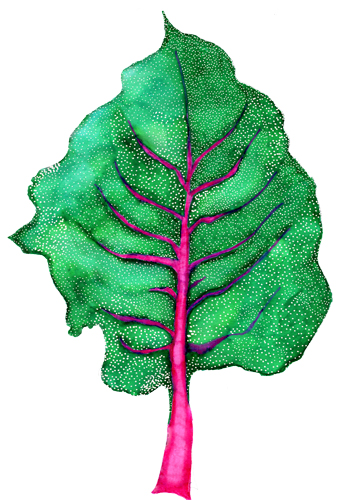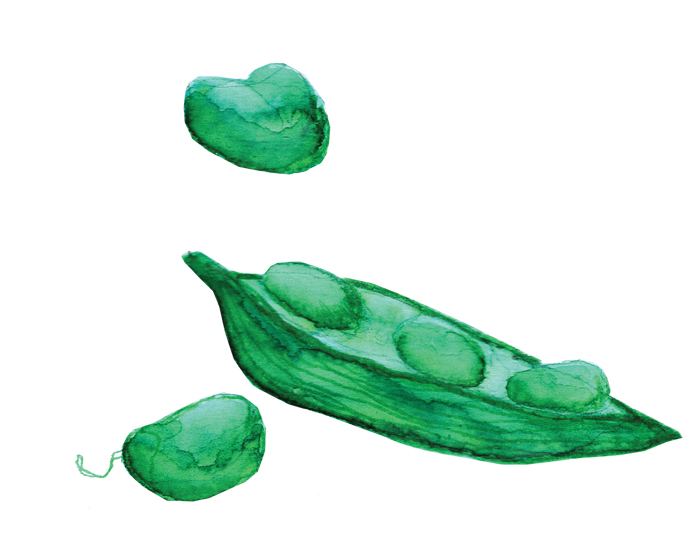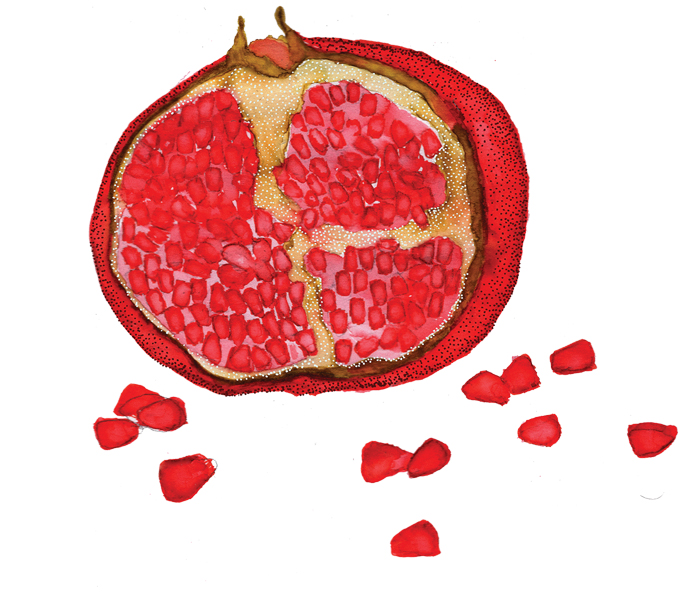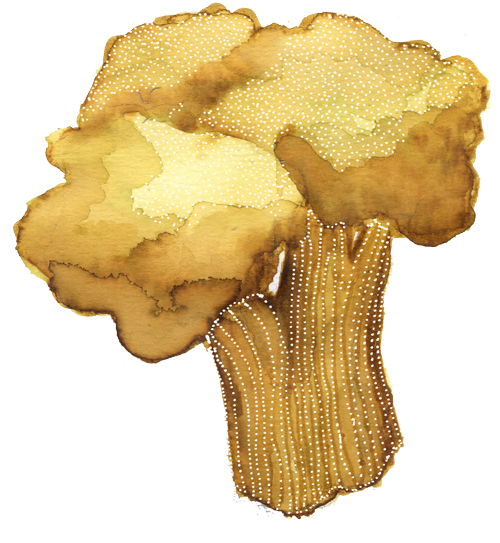Feasting Sustainably, the Syrian Way
As a new Canadian, learning about sustainability inspired me to share recipes from my homeland.
When I moved to Toronto from Syria as a refugee in late 2016, my sponsors showed me how to sort my waste. I was surprised to learn there are three separate bins for garbage, organic waste, and recyclables—and each with a colour of its own.
Back home, my family and I sorted and recycled our waste. We composted food scraps for our plants and gathered paper waste for a small non-profit organization that sold it to paper manufacturers. But these practices are cultural, rather than supported by the government. Consequently, many people simply toss everything together, and my mother lamented about the growing sources of garbage.
In my new home in Canada, I sought to fully immerse myself in Canadian culture. Embracing every new idea became a guiding principle, and amidst the multitude of concepts, the words “sustainability” and “environment” stood out. While I hadn’t encountered scientific phrases about the environment in my formal education in Syria, our cultural heritage emphasized a sustainable lifestyle and identity, and a commitment to health. To my surprise, what some considered a novel concept was an integral part of my ancestors’ lives.
As I settled into life in Toronto, I learned about local sustainability practices from my sponsors and environmental activists. I began repurposing morning coffee grounds to nourish plants and cutting orange peels into tiny pieces to add to soil, as I’d learned back home. I started thinking of how we could convert used cooking oil into soap. Now, in my building in Canada, we’ve established a partnership with an environmental organization to collect used cooking oil to be repurposed into boat fuel. Awesome!
Our cultural heritage emphasized a sustainable lifestyle and identity, and a commitment to health.
I began to educate myself about climate change and our responsibilities to preserve the planet. Soon, I discovered parallels between my Syrian heritage and the environmental principles I was encountering. These days, people go to thrift shops to be more sustainable. But my ancestors have long seen value in recycling clothes. One pair of pyjamas might serve four children, passed down between siblings. Cousins shared dresses, maximizing wear before disposal, and women repurposed garments into skirts or other attire, extending their lifespan.
Even so, capitalism left its mark in Syria. I recall my grandmother’s concerns about the young generation’s shift in lifestyle before the war. She scrutinized everything, noting that modern breakfast cereal was laden with carbs and sugar compared to a traditional fibre-rich Syrian breakfast and that wearing polyester instead of cotton was akin to wrapping oneself in plastic.
Today, I aim to integrate my heritage with environmentally friendly practices from diverse Canadian communities, seeking a sustainable balance in my lifestyle. Canada’s multiculturalism and openness to new customs offer advantages. At the same time, Canada’s fast-paced, consumption-based lifestyle contrasts with my experience growing up in a culture where traditions are passed down from generation to generation.
As a Syrian, I’ve inherited a culture shaped by many civilizations that have inhabited the region throughout history. While Western culture promotes individualism, Syrian culture focuses on the collective nature of society: individuals work together to navigate environmental challenges and conflicts. Central to this ethos is the practice of sharing resources within families or among close relatives.
My mother passed this mindset on to me. The first lesson: when you protect God’s blessings, God protects you in return. Simple yet profound practices like not wasting water even when near a river and incorporating leftovers into the next meal were instilled in me by my mother. Her mindset was reflected in practices in my community. Many bulk stores provided paper bags instead of plastic ones. Dried peach seeds were turned into snacks and olive seeds were burned for heat.
Syrian culture focuses on the collective nature of society. Central to this ethos is the practice of sharing resources within families or among close relatives.
In heartfelt conversations with my mother, we hit upon the enduring legacy of resilient women who devised, preserved, and passed down practices to safeguard the environment through generations. Considering their historically limited access to education compared to men, I am all the more amazed at how they navigated and thrived through all four seasons.
In Toronto, I began seeking recipes that eschew eggs and dairy, opting for plant-based alternatives that align with each season. This pursuit led me to a treasure trove of culinary delights that I feel compelled to share.
Syrian cuisine, renowned for its diversity and vegetable-centric foundation, boasts an array of vegan dishes. I am eager to share and adapt these offerings to the rich cultural tapestry of Canada, emphasizing the importance of embracing diversity in culinary practices.
A Note on Pomegranate Molasses
In Syrian cuisine, pomegranate molasses takes centre stage, enhancing dishes with its deep red hue, thick texture, and sour flavour. You can buy it from stores that stock Middle Eastern goods or make your own!
You’ll need 5 kg of pomegranates. Timing is key, as pomegranate season begins in fall. It’s crucial to select sour pomegranates over sweet ones. To extract the molasses, peel the pomegranates and pull out the arils. Blend the arils until they form a pulp and strain the mixture to separate the juice. Throw the residue in your compost bin.
Boil the juice until it thickens and a white foam forms on top (remove the foam as best you can) and it thickens. Add 1 teaspoon of salt and let it simmer for 15 minutes. It’s ready when a spoon dipped into the molasses is coated with syrup. Allow the mixture to cool and pour it into a bottle. Store in the refrigerator for up to one year.

Spring—Folia
Folia is a tasty traditional stew of chard and beans.
Servings: 4-5
Ingredients
- ¼ cup olive oil
- 1-1.5 kg Swiss chard, chopped fine
- 700 g frozen or fresh green beans
- ½ cup water or vegetable broth
- 1 bunch fresh cilantro, chopped
- 2 cloves garlic, minced
- 2 Tbsp walnuts, chopped
- 3 Tbsp pomegranate seeds
Preparation
- In a large pot, heat the oil and sauté the beans and chard for a few minutes. Add a half cup of water or broth and cook until tender.
- Add the minced garlic and a small amount of the cilantro to the pot, along with a pinch of salt and turn off the heat.
- Garnish with the remaining cilantro, walnuts, and pomegranate seeds, and serve.

Summer—Green Bean Stew
This green bean stew is a light, easy-to-prepare summer meal.
Servings: 4-6
Ingredients
- 1 kg green beans, cut into 2-cm pieces
- 2 big tomatoes, peeled and finely chopped
- 5 cloves garlic, crushed and sprinkled with salt
- 4 Tbsp olive oil
Preparation
- Heat olive oil in a large pot and stir in the green beans. Add a small amount of water to the pot. Let the beans cook on low heat for 30 minutes, stirring occasionally.
- Add the chopped tomatoes and the garlic. Stir the mixture well to combine. Let the beans, tomatoes, and garlic simmer on low heat until the beans are tender and cooked.
- Season with salt to taste.
- Serve at room temperature.

Fall—Harrak bi Isbaou
Harrak bi isbaou is a traditional vegan delight from Damascus, boasting a perfect blend of sweet and sour flavours. Rich in iron, fibre, and protein, it exemplifies the region’s culinary finesse.
Servings: 3-4
Ingredients
- 1 cup brown lentils
- 4-5 cups water
- vegetable oil for deep frying (avocado oil works well)
- 2 large onions, sliced
- 1 large pita round, cut into 1 cm squares
- 3 Tbsp olive oil
- 1 large bunch cilantro, finely chopped
- 4 large cloves garlic, smashed
- ½ cup small pasta variety
- 3 Tbsp tamarind pulp
- 1 Tbsp pomegranate molasses
Preparation
- Place lentils in a pot, cover with 4-5 cups of water, and boil until tender.
- Deep-fry pita squares in vegetable oil until golden brown. Set aside to cool.
- Fry sliced onions in a deep pot until golden brown and caramelized. Drain on paper towels or newsprint to maintain crispiness.
- In a skillet, heat olive oil. Add half of the garlic, cilantro, and a dash of salt. Cook until fragrant, then remove from heat.
- Stir pasta and olive oil into the lentils; cook until tender.
- Dissolve tamarind pulp in water, strain, and add to the lentil mixture. Stir in salt and pomegranate molasses, followed by the remaining garlic and half of the fried onions. Simmer until thickened.
- Serve at room temperature or cold. Place lentils into a bowl, top with the garlic-cilantro blend, sprinkle with fried bread, and garnish with crispy onions.

Winter—Manzala bi Zahra with Mahoas
Manzala bi zahra with mahoas sauce is a Syrian variation of a zahra bi laban, a common Middle Eastern stew of tender cauliflower and beef typically accompanied by yogurt. It is served in the winter as a comfort food. To make this recipe vegetarian, omit the beef, use a plant-based alternative, or replace it with some boiled potato.
Servings: 4-5
Ingredients: Manzala bi Zahra
- ½ cup vegetable oil plus 2 Tbsp
- 2 cauliflower heads, cut into medium florets then washed and drained (reserve the stems for the sauce)
- 2 medium potatoes, sliced 1 cm thick
- 400 mL water
- 2 cloves garlic, minced
- 1 bunch fresh cilantro, chopped
Preparation
- Heat the ½ cup of vegetable oil in a pan on high heat. Add the cauliflower florets and sauté until they achieve a golden colour. Place them on a paper towel or some newsprint to absorb excess oil.
- In another pot, heat the remaining vegetable oil, add the sliced potato, and season with salt.
- Once the potato is golden, layer the sautéed cauliflower on top of it and add the water. Cover the pot, allowing the mixture to cook until the cauliflower gets tender. Garnish with minced garlic and chopped cilantro.
- Serve hot, with pita and mahoas.
Ingredients: Mahoas
- leftover cauliflower stems, finely chopped
- 1 Tbsp vegetable oil
- salt to taste
- 5 Tbsp yogurt
- 1 clove garlic, minced
- 1 tsp ground cumin
Preparation
- To make mahoas, heat the vegetable oil in a pan. Add the cauliflower stems and a pinch of salt. Sauté until golden.
- In a bowl, mix the yogurt, minced garlic, ground cumin, and salt to taste.
- Incorporate the sautéed stems into the mixture.
Print Issue: Spring/Summer 2024
